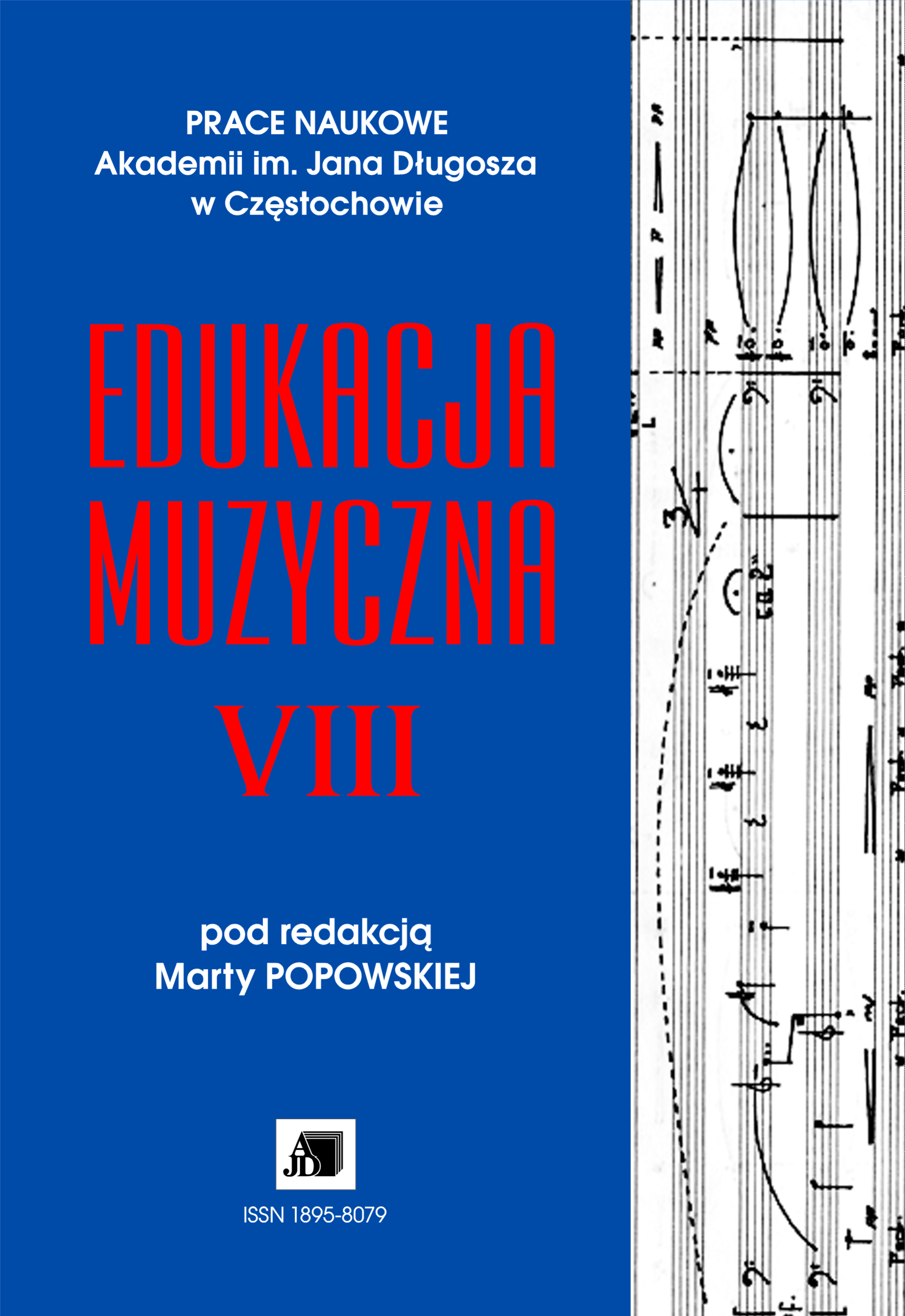Rodzaje faktury w utworach dla dwóch pianistów w twórczości współczesnych kompozytorów śląskich
Kinds of Texture in Pieces for Two Pianists in the Works of Contemporary Silesian Composers (Summary)
Author(s): Maryla RenatSubject(s): Fine Arts / Performing Arts, Music
Published by: Uniwersytet Jana Długosza w Częstochowie
Keywords: Silesian composers; Polish contemporary piano music; piano 4 hands pieces; pieces for 2 pianos; instrumental texture
Summary/Abstract: The issues of texture in piano pieces of Silesian composers, written from 1953 to 2008. The object of the study were 6 compositions for 2 grand pianos or four hands of the following composers: Józef ĝwider, Allegro. Moderato for 2 pianos (1953); Henryk Mikoáaj Górecki, Toccata for 2 pianos (1955) and Five pieces, Moderato for 2 pianos op. 13 (1959); Jan Wincenty Hawel, Capriccio-Fantasia for 2 pianos (1975); Aleksander Glinkowski, Dialogos for the piano for 4 hands (1976); Andrzej Dziadek, Klavierstücke for 4 hands (2008). The purpose of the conducted analyses is an attempt to answer the questions concerning models of instrumental texture. The purpose of the conducted analyses is an attempt to answer questions concerning models of instrumental texture. What are the relations designed for the co-performers in a given composition for two performers? How does cooperation proceed between two parts making up one piece of music? What texture model results from the mutual relations between the co-performers? What are the conditions and assumptions of such relations set by the composer? The authoress precedes the solution of the main issues with presentation of an outline of the Silesian school of composition. Then, she makes a separate review and assessment of piano music against the background of the entire set of works of each composer. When answering the main research problem, she states that the relations between the parts of the two performers determine the texture of the musical piece – they arise from different stylistic conditions and assumptions set by the composer. The final conclusions are presented in a Table. The following models of instrumental textures can be identified in the discussed works: 1) layered complemented texture (ĝwider), 2) euphonic texture (H.M. Górecki, Toccata ), 3) pointillistic, complemented texture (H.M. Górecki, PiĊü Utworów), 4) diversified texture: euphonic, dialogic (J.W. Hawel), 5) two-dimensional dialogic texture (A. Glinkowski), 6) dialogic-complemented texture (A. Dziadek).
Journal: Edukacja Muzyczna
- Issue Year: 2013
- Issue No: 8
- Page Range: 27-45
- Page Count: 18
- Language: Polish

